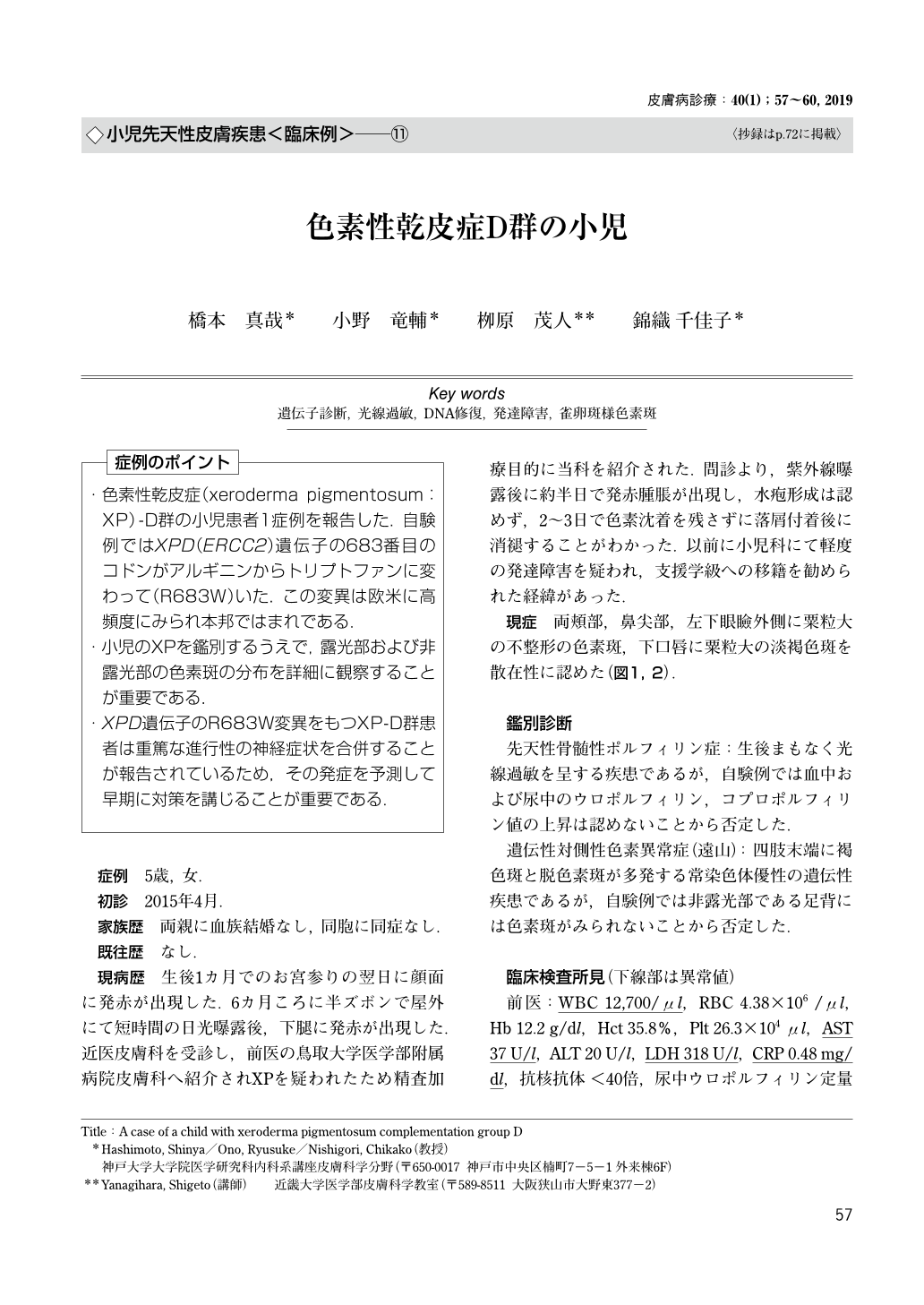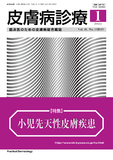- 有料閲覧
- 文献概要
- 1ページ目
- 参考文献
・色素性乾皮症(xeroderma pigmentosum:XP)-D群の小児患者1症例を報告した.自験例ではXPD(ERCC2)遺伝子の683番目のコドンがアルギニンからトリプトファンに変わって(R683W)いた.この変異は欧米に高頻度にみられ本邦ではまれである.・小児のXPを鑑別するうえで,露光部および非露光部の色素斑の分布を詳細に観察することが重要である.・XPD遺伝子のR683W変異をもつXP-D群患者は重篤な進行性の神経症状を合併することが報告されているため,その発症を予測して早期に対策を講じることが重要である.(「症例のポイント」より)
A case of a child with xeroderma pigmentosum complementation group D
Hashimoto, Shinya1)Ono, Ryusuke1)Yanagihara, Shigeto2)Nishigori, Chikako1) 1)Division of Dermatology, Department of Internal Related, Kobe University Graduate School of Medicine 2)Department of Dermatology, Kindai University Faculty of Medicine
Abstract A 5-year-old girl was referred to our hospital for a possible diagnosis of xeroderma pigmentosum (XP). Her parentsnoticed severe sunburn upon minimum sun exposure soon after birth. On the first examination, there were tiny pigmentedfreckles on her cheeks and dorsum of nose. Unscheduled DNA synthesis test and plasmid host cell reactivationassay were performed, and we diagnosed her with XP-D. Gene sequencing for ERCC2, the responsible gene forXP-D, showed the homozygous R683W mutation. In western countries, homozygous R683W mutation is frequentamong patients with XP-D and they manifest severe neurological abnormalities, whereas in Japan the frequency ofthis type of mutation is low and patients with XP-D rarely manifest severe neurologic abnormalities. It implies thatthe difference in clinical manifestations may be attributed to the difference in the types of genetic mutation inERCC2. Therefore genetic analysis in early childhood plays important role to encourage patient’ s parents to ensure the sun protection and improve prognosis.

Copyright © 2019, KYOWA KIKAKU Ltd. All rights reserved.


